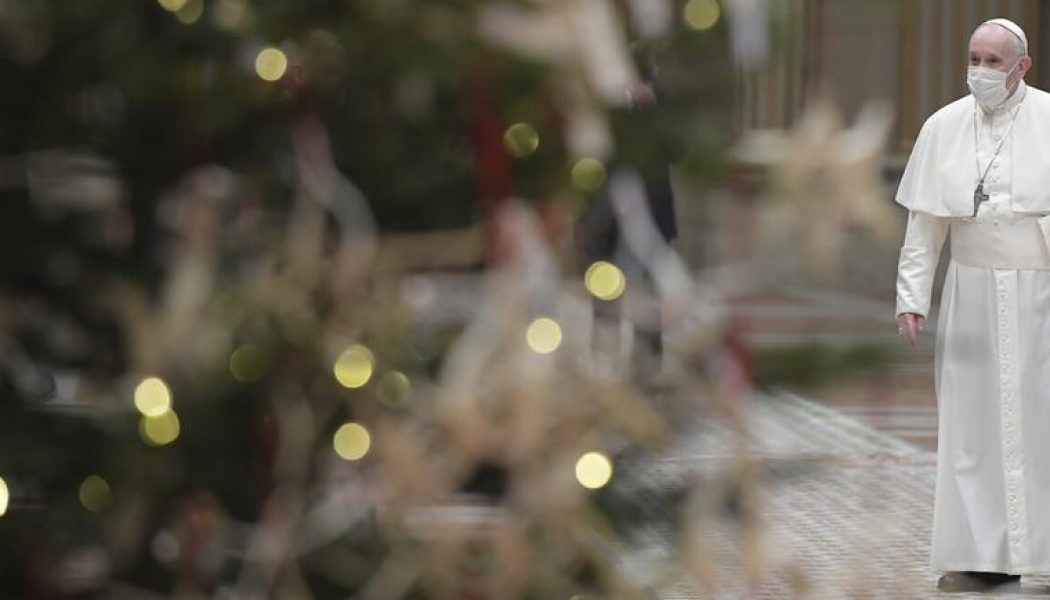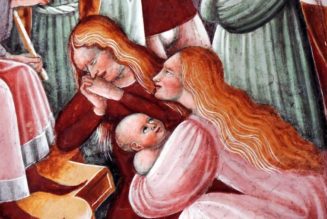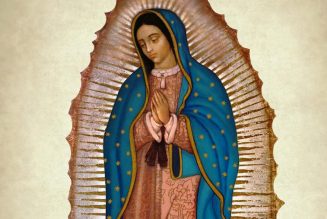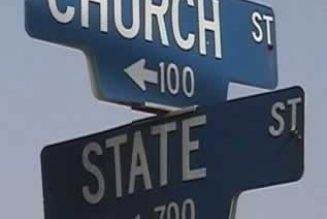
Pope Francis has a fondness for improvisation, both in terms of personal style and pastoral governance. A Vatican documentary on the private, often surprise, visits of Pope Francis brings those improvisations to the fore. Yet 2020 as a whole highlighted that improvisational style in matters of governance, too.
For several years Pope Francis has made monthly Friday visits to exemplify the corporal works of mercy. These visits, characterized as “strictly private” and hence not covered by the press corps, nonetheless included a Vatican television crew. That footage has now been made into a documentary film entitled Only Together and had its premiere Jan. 4.
The improvised visits, in which people answered their doors only to find the Supreme Pontiff on the other side, included moving moments showing the pastoral heart of Pope Francis.
The improvisational style is not only for private visits. The past year also included that style at work on eight key occasions in 2020.
A Prefect Disappeared
January 2020 occasioned a controversy about a book jointly authored by Pope Emeritus Benedict XVI and Cardinal Robert Sarah — or perhaps a Sarah book to which Benedict made a contribution. That was the dispute. The controversy evidently displeased Pope Francis, who fired Archbishop Georg Ganswein, the prefect of the papal household. Since 2013, Archbishop Ganswein had been prefect, as well as serving as the private secretary for Benedict XVI.
Firings are not unusual, by themselves, but Archbishop Ganswein’s was a remarkable improvisation. He is still, formally, the prefect. He still has the job, but all his prefecture duties were reassigned and he never appeared again in the prefect’s position at papal audiences.
In a year-end interview, Archbishop Ganswein finally admitted that his “reassignment” had been “painful” but not a “punishment.” That fine distinction is required by the novel circumstance of being keeping a position but being fired from the job.
Pandemic Pilgrim
Pope Francis moves around the city of Rome more informally than his predecessors, as the new documentary demonstrates. Neither he nor Benedict before him kept up the pace of St. John Paul II’s more than 300 parish visits, but Pope Francis is comfortable making spontaneous visits to holy places in the Eternal City.
In the early stage of the pandemic, when Italy was in lockdown and the streets of Rome eerily quiet, Pope Francis made a spontaneous visit to his favorite Marian image, that of Salus Populi Romani at the basilica of St. Mary Major. He then walked to pray before the miraculous crucifix in the church of San Marcello. The sight of the Bishop of Rome walking the empty streets to pray for the deliverance of the city and the world was powerfully moving.
The Holy Father did it again on the feast of the Immaculate Conception (Dec. 8), making an unannounced visit in the pre-dawn rain to the Marian statue in the Piazza di Spagna. He then went on to St. Mary Major to offer the Holy Mass.
March 27 Urbi et Orbi
Both the Salus Popoli Romani image and the San Marcello crucifix were brought to St. Peter’s Square for the Holy Father’s signature moment of 2020. The solitary prayer and Urbi et Orbi blessing in an empty square, in the darkness and under the rain, expressed in a dramatic way the physical isolation and spiritual solidarity of the pandemic.
In a pontificate of powerful gestures, the pandemic Urbi et Orbi will be remembered more than the rest. In a year that required improvisation by pastors the world over, the Holy Father gave an early model of what was possible.
Querida Amazonia
Before the pandemic, the most highly anticipated papal initiative of 2020 was the introduction of married priests, and perhaps female deacons, at least as a trial in the Amazon region of South America. The decision was widely expected in Querida Amazonia, the apostolic exhortation following the Amazon synod of 2019. Indeed, both supporters and opponents of the move considered that the whole purpose of the Amazon synod, limited to local bishops and prepared by German money, was to achieve just that.
It didn’t happen. In a decision that shocked some of his most ardent partisans, Pope Francis ended the Amazon synod process with a whimper, not a bang. There would be no married priests, no female deacons. The Holy Father went further, stating that the entire process failed as a synod, animated as it was by too worldly a spirit, not leaving room for the Holy Spirit to work. The severity of the papal judgment was entirely unexpected.
Financial Reform
In December 2019 the Financial Times reported on a dubious Vatican real estate investment in London. There were accounting tricks to keep it off the books, the revenues employed were ambiguous and the losses were significant. It seemed another sign that the financial reform launched in 2014 with such energy and entrusted to Cardinal George Pell had stalled, if not failed.
Yet Pope Francis used the pandemic to refocus attention on the financial reform, prompted by the London scandal. In August, Pope Francis wrote a letter to the Secretariat of State, stripping it of all its assets, and forcing it to submit its budget for review.
If that earthquake was not enough, in September the Holy Father fired Cardinal Angelo Becciu at what the latter thought was a routine meeting. Cardinal Becciu had served previously as chief deputy of the Secretariat of State, from which post he had blocked most of Cardinal Pell’s principal reforms.
The peremptory defenestration of Cardinal Becciu — no charges have yet been laid — following the financial neutering of the Secretariat of State represent unprecedented reform measures, evidently designed to completely take the Curia by surprise.
The NBA Visits Regarding Black Lives Matter
Popes meet a lot of different groups, but the audience granted to NBA players in November was one of the more unusual in recent years. It was not a ceremonial audience with some pious boilerplate offered. It was an extended discussion with the NBA players about their support of Black Lives Matter; they gave Pope Francis a BLM T-shirt as a gift.
The NBA players had been invited on 48 hours’ notice, not easy logistics given the travel restrictions of the pandemic. Nevertheless, a charter flight was arranged and the NBA responded to the papal invitation.
The royal treatment granted the basketball BLM activists raised more than a few eyebrows in Rome. When Cardinal Joseph Zen came to Rome in September to discuss Chinese persecution and the appointment of a new bishop of Hong Kong, he was not granted an audience. He returned home without seeing Pope Francis.
Abortion in Argentina
The president of Argentina submitted a bill to the Argentinian parliament to legalize abortion. It passed in late December, opposed vigorously by the nation’s Catholic bishops.
Pope Francis chose an unusual way to participate in the national debate. He made no public statements on the matter. In January 2020, when the Argentinian president visited Pope Francis at the Vatican, the official Vatican statement claimed that pro-life matters were discussed. It had to be corrected when the Argentinian delegation clarified that the Holy Father had not raised the issue.
Instead, in the fall Pope Francis wrote two private letters, subsequently made available by their recipients, denouncing the proposed abortion law, likening abortion to the “hiring of hitman.” No Vatican explanation was given for the novel strategy of entering the public debate in Argentina by means of private letters.
Year of St. Joseph
On Dec. 8, the Holy Father issued a lengthy apostolic letter on St. Joseph. In a decree published the same day, the Apostolic Penitentiary specified indulgences for a “Year of St. Joseph.” The curious aspect? Pope Francis said nothing about such a year in his letter, and has not uttered a single word about the Year of St. Joseph since, despite the prominence of Joseph in Advent and Christmas.
It may be that the Year of St. Joseph is actually the initiative of the Apostolic Penitentiary. Pope Francis is not the only one who can employ improvisational gestures.
Join Our Telegram Group : Salvation & Prosperity









